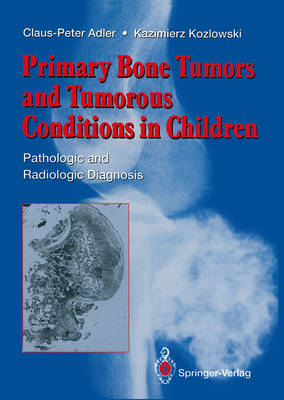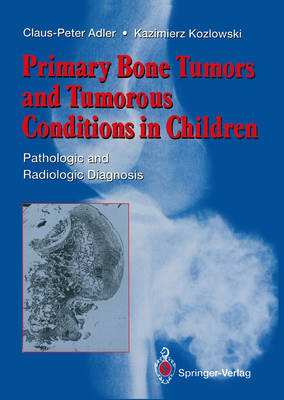
- Afhalen na 1 uur in een winkel met voorraad
- Gratis thuislevering in België vanaf € 30
- Ruim aanbod met 7 miljoen producten
- Afhalen na 1 uur in een winkel met voorraad
- Gratis thuislevering in België vanaf € 30
- Ruim aanbod met 7 miljoen producten
Primary Bone Tumors and Tumorous Conditions in Children
Pathologic and Radiologic Diagnosis
Claus-Peter Adler, Kazimierz Kozlowski
Paperback | Engels
€ 139,95
+ 279 punten
Omschrijving
We welcome the publication of this volume, which discusses the diagnosis of bone tumours with particular reference to children and adolescents. As founder members of the International Skeletal Society we are delighted to learn that the book had its inception at one of the Society's meetings. It reflects, moreover, the combined presentation of radiological and pathological diagnostic information which has been such a feature of the meetings of the International Skeletal Society. We commend it to all readers with an interest in tumours of the skeleton. Hubert A. Sissons Ronald O. Murray Preface The diagnosis of primary bone tumors is often difficult. There are several reasons for this. As primary bone tumors are rare in childhood, practitioners in a number of pediatric subspecialties are not familiar with them. The clinical symptoms and signs are often elusive, the biochemical investigations usually normal and the radio- graphic features often uncharacteristic. Even the pathologist, who is the final step in arriving at the proper diagnosis and who has all the available clinical, biochemical and radiographic data, may encounter difficulties. A good tissue sample is the basis for microscopic investigation. However, bone tumors often show an extreme variety of structures which confuse even experienced bone pathologists. Therefore, histo- pathologic analysis must take into account all available clinical, biochemical and radiographic data. The close cooperation of the pathologist with clinicians and, especially, radiologists is of the utmost importance.
Specificaties
Betrokkenen
- Auteur(s):
- Uitgeverij:
Inhoud
- Aantal bladzijden:
- 267
- Taal:
- Engels
Eigenschappen
- Productcode (EAN):
- 9781447119531
- Verschijningsdatum:
- 20/11/2011
- Uitvoering:
- Paperback
- Formaat:
- Trade paperback (VS)
- Afmetingen:
- 193 mm x 270 mm
- Gewicht:
- 621 g

Alleen bij Standaard Boekhandel
+ 279 punten op je klantenkaart van Standaard Boekhandel
Beoordelingen
We publiceren alleen reviews die voldoen aan de voorwaarden voor reviews. Bekijk onze voorwaarden voor reviews.










